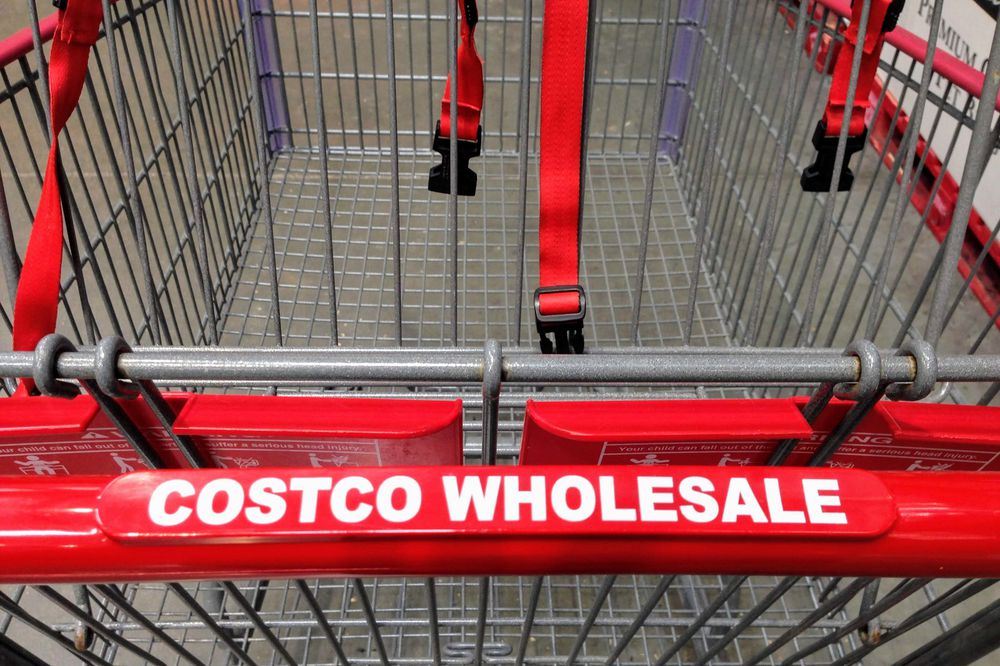When warehouse superstores Costco and Price Club merged in 1993 in a $2 billion stock swap, the nation’s largest warehouse club was born. “It’s truly a blockbuster event in retailing,” Michael Exstein, a retailing analyst, told the Los Angeles Times in 1993.
Since then, Costco has grown to become a $200 billion company, spreading its 861 bricks-and-mortar stores across the globe. The retailer can attribute its success to an unorthodox business model, one which earns the company billions in profit despite paying high wages and setting low prices.
Costco’s Business Model: Low Margins, High Volume
Four things make Costco stand out as a retailer: low overhead, low margins, high volume, and membership fees.
Low Overhead
Costco keeps its expenses low by opting for a no-frills shopping experience. Fancy decorations? Towering displays? You won’t find them at Costco.
"Costco is able to offer lower prices and better values by eliminating virtually all the frills and costs historically associated with conventional wholesalers and retailers, including salespeople, fancy buildings, delivery, billing, and accounts receivable,” Costco’s CEO Craig Jelenik said. “We run a tight operation with extremely low overhead which enables us to pass dramatic savings to our members."
Low Margins
A gross margin refers to how much money a company keeps after subtracting direct expenses. In other words, a higher gross margin means that a firm gets to keep more of its revenue.
Costco manages to operate at around an 11% gross margin — relatively low for retail — whereas Walmart hovers around 24%. Margins are particularly low at Costco because the retailer caps markups at 14% and 15%, passing the savings onto consumers.
This business model is sustainable because Costco is able to sell a high volume of products at discounted prices while also charging Costco members an annual fee.
High Volume
“One of the things about low prices, you generate a lot of volume,” Costco's CEO told CNBC. Put differently, it’s simple supply and demand: since prices at Costco are low, there’s higher demand, which generates more revenue. And unlike traditional retailers, Costco has a secret weapon that it can use to boost its revenue: membership fees.
Membership Fees
On top of selling a lot of stuff, Costco stays afloat by making money off its members who pay between $60 and $120 a year to shop at the wholesaler. Of course, this membership-driven business model only works because Costco customers are loyal, with 92.7% of consumers renewing their Costco memberships at the end of the company’s 2023 fiscal year.
How Costco Made Its Money in 2023
To get a better grasp of how Costco makes its money in concrete terms, we’ll turn to its fourth-quarter earnings reports, which the company released in September.
Quarterly Earnings
Income - Sales ($77.4 billion): The overwhelming majority of Costco’s revenue (around 98%) comes from selling products and services.
Income - Membership Fees ($1.5 billion): Just 2% of Costco’s revenue comes from membership fees, though that extra $1.5 billion makes up for those low margins.
Expense - Merchandise Costs ($69.2 billion): Unsurprisingly, purchasing the merchandise that Costco then sells is its biggest expense, making up around 91% of its operating costs.
Expense - Selling General and Administrative ($6.9 billion): The remaining 9% of Costco’s overhead went to other operational and administrative expenses, such as rent, utilities, insurance, and legal fees.
Net Profit ($2.2 billion): Costco made just over $2 billion in profit over its 17-week fourth quarter.
Costco’s Segment Report
United States Operations: Costco makes more than half of its money in the U.S., where it has 591 warehouses.
International Operations: The retailer operates 270 Costco warehouses in other countries, with the vast majority in Canada. These international warehouses account for just under a third of the firm’s revenue.
The Bottom Line
Although membership fees only account for around 2% of Costco’s revenue, the big-box retailer needs this extra revenue to make a profit given its low margins. Boiled down, the business model is as follows: Costco sets prices low, attracting loyal members and boosting sales. And then the company makes up for its discounted prices by charging membership fees.
Frequently Asked Questions
Is Costco a wholesaler?
Costco is technically a retailer and not a wholesaler, as it sells its goods directly to consumers. Wholesalers buy bulk goods, which they then sell to other retailers (not consumers) at higher prices.
How does Costco make its money?
The key to Costco’s success is its Gold Star and Executive Memberships, which generate just enough revenue to make the firm profitable. Because of Costco’s low margins, the profits from goods alone wouldn’t be enough to be successful.
Will I save money if I shop at Costco?
That depends. If you use your Costco membership, then it’s likely worth the extra $60 to $120 that you spend per year.

 Photo credit: Mathew S./ Yelp
Photo credit: Mathew S./ Yelp Photo credit: Cheapism
Photo credit: Cheapism






